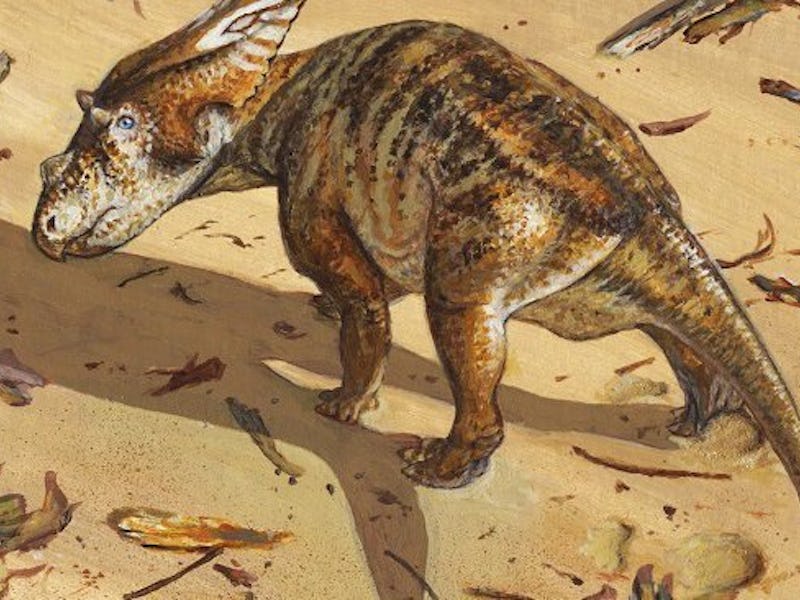
The researchers that found a juvenile Chasmosaurus in 2010 at the Dinosaur Provincial Park in Alberta, Canada — an extremely rare discovery — have now published their findings in detailed description.
The article, posted to the Journal of Vertebrate Paleontology features a great deal of information concerning the Chasmosaur — a herbivore that lived in the Late Cretaceous period. Lead author Professor Philip Currie of the University of Alberta explained the importance of the find to Phys.Org:
“For the first time ever, we have a complete skeleton of a baby ceratopsid…We’ve only had a few isolated bones before to give us an idea of what these animals should look like as youngsters, but we’ve never had anything to connect all the pieces. All you need is one specimen that ties them all together. Now we have it!”
In addition, finding an immature fossil like the Chasmosaurus can help offer hints toward the lives of related animals, in this case cousin creatures like the iconic Triceratops, as Currie notes, “We now have an anchor point with the baby that we can compare with all other specimens of this species…Unless you’ve got that basic anatomical information, you’re kind of shooting in the dark with all of these other calculations.”
Among the new information the find has brought is that its skull developed radically from how science had previously expected, says Currie:
“There was no doubt in our minds that a baby would have had a much shorter frill relative to its skull length than an adult. But what we couldn’t see is that it also has a different shape. Now with a full skull of a juvenile in which the bones actually articulate with each other, we can see that in Chasmosaurus, the back of the frill isn’t broad and squared off the same way that it is in an adult. In fact, the frill narrows towards the back. And instead of being flat on top from one side to the other, the frill is arched and has a ridge running down the middle of it…It is very different than I expected.”